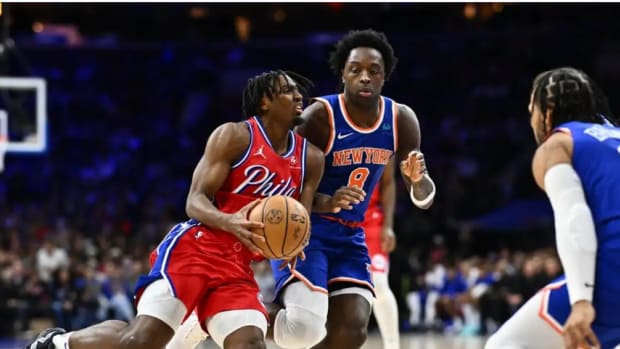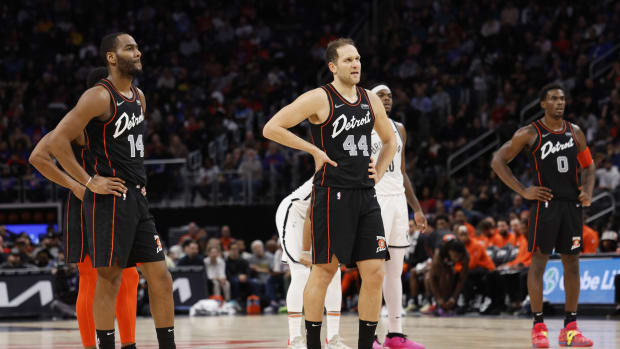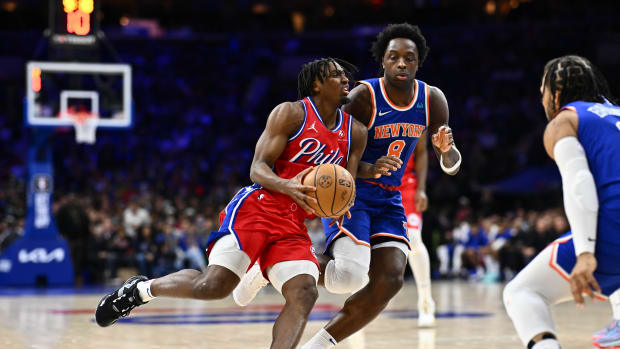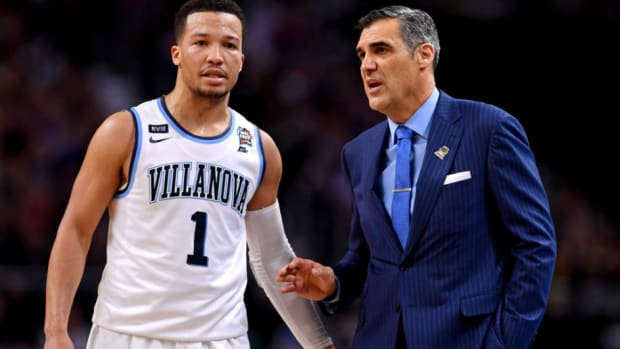WATCH: What Brett Brown and Sixers can teach the Knicks about rebuilding
PHILADELPHIA — As the Knicks reckon with a 4-17 start to the season, another campaign with an emphasis on small victories in lieu of the larger ones seems to be what's ahead for David Fizdale's crew.
It stands in contrast to what the organization hoped and believed would happen on the floor this season. Sixers coach Brett Brown remembers that feeling. It's easy to think of the Sixers of inevitable now, in their third straight season of playoff contention, a fashionable pick to win the Eastern Conference. But four long years of losing preceded that, as Brown will be the first to tell you.
To hear Brown tell it, he didn't even see it coming.
"I never claimed to know. I'll say that," Brown said during a media avail at Sixers practice Tuesday. "I think that this whole tanking, rebuild process, whatever words people choose to use went slower than what I signed up for. And it happened through injury. Nobody planned that and it just, because of multiple injuries, it just was prolonged."
It's interesting to consider that the current Knicks, if we evaluate them in terms of the Scott Perry/Steve Mills version of the front office, are in their third season. Moreover, the parallels would be closer, had the Knicks held onto Kristaps Porzingis — huge asset of a young player sidelined by injuries.
The problem is one of an adjustable lens. By other measures — say, the period since the Knicks were a playoff contender — this will be Year 6, and really, Year 7. If the measure is since David Fizdale came aboard, it is Year 2.
But notably, even the Sixers, within that seven-year span, changed leadership multiple times. The point here is, rebuilding feels long, even when it works. (Sometimes, when a team is just bad for an extended period of time, it can feel like rebuilding, but it isn't.)
So what changed? Well, Brown had an easy answer for that one. Personnel.
"And here comes [Marco] Bellinelli and JJ [Redick] is here and we really felt like we started to get some weapons that can coexist with Joel [Embiid] and Ben [Simmons]. And that point we knew you were going to be good. How good? Championship good was the was the desired goal obviously, but the path to arrive in my seventh year, you can't script that nor can I claim my knew it. I didn't know any of it."
There's a lesson within that answer, too. And it's an obvious one. To take that leap forward, it's about who is on your team.
Take off your fan glasses, and really think about the gap between Joel Embiid and anyone on the current Knicks. Do the same thing with Ben Simmons.
The Sixers had, and have, both of them.
So whatever culture or other legitimate way you want to talk about how to properly build a team, this Knicks team, and measuring its final 61 games, have everything to do with how much closer RJ Barrett, Mitchell Robinson, Kevin Knox and Frank Ntilikina are at turning into legit NBA starters.
At least from this vantage point, the other major way to turn the Knicks into a Sixers-like team is to find a way to add players at the level of Simmons or Embiid.
That's the real lesson to be found down the New Jersey Turnpike. Or as Brown put it, when I asked him if the best players, ultimately, are the key to everything.
"It always is," Brown answered. "It always will end up [okay], if your talent's there. And then you're going to need a lot of other things, too, to put mortar around the talent. You need to hold it together with character and chemistry, this team. You need that. You need to have a defensive identity. But you can have all that and not have talent and I would be fishing in May."




